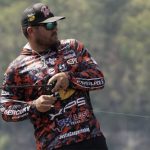SGMA hosted a journalist roundtable at the show with members of the “Dont Take My Bat Away” coalition including Tom Cove, president and CEO of SGMA, Jim Darby, VP of promotions for Easton Sports, and Ari Fleischer, the former Bush Administration spokesman who is handling PR for the effort. The group reiterated their stance supporting what they claim to be an objective, scientific look at the data concerning baseball safety. According to Darby, Little League Baseball recorded 27 batted ball injuries to pitchers in 2006, occurring over the course of 107 million at bats. Cove argued that the problem is not just political organizations acting contra to the data, but also to the leagues and organizations that support and run baseball throughout the country. He worries that the ultimate effect of this litigation would be to harm baseball, or as Fleischer put it, the action will “drive kids away from baseball without making it any safer.”
SGMA also hosted a series of educational seminars that looked at topics and trends affecting and driving the sporting goods industry. At the Trends in Team Sports session, panelists discussed a range of topics including the previously discussed bat ban, trends in participation and new opportunities available to team dealers and manufacturers alike. Stacy Hahn of Denver Athletics, gave a well-planned presentation on selling to the cheer market with the underlying theme that while any team dealer can find penetration and sales here, it is in their best interest to make a new hire of someone already familiar with cheerleading to spearhead the effort. Spaldings Dan Touhey discussed the worrying trend in declining recreational athletics participation. In Touheys view, the move towards earlier specialization is “freezing out millions of children who want to play for fun.” He noted that since 1990, participation in basketball by recreational players is down 27%.
Dean Baker, VP of TAG, Inc. used his time to discuss a laundry list of issues currently facing the countrys team dealers including declining school budgets, slow adaptation to new technologies, mergers and acquisitions on both the vendor and retailer sides, off-shore sourcing and online competition, amongst others. However, for every issue, Baker noted, there is a solution and the dealers that find those solutions can not only survive, but can find a niche in which to thrive.
In another trend session, the show turned its eyes to the running specialty market as Tom Raynor, chairman and CEO of Fleet Feet, Inc. moderated one of the most widely attended educational sessions. Panelists included management members of Brooks, Reebok, Mizuno and adidas discussing the product and participation trends currently holding sway over the market. In looking at participants, the cause-driven runner was pointed out as a major force driving sales, especially in the womens business. In fact, according to Raynor, womens product accounted for 8 of the top 10 best selling footwear styles at Fleet Feet for the year-to-date period. At Fleet Feet, Raynor said that Asics and Brooks held leading market shares, while Saucony and Mizuno also had double-digit slices of the pie. He described Nike rather dubiously as not having “met standards of ease to work with,” nor having supplied “consistent good product.” He contrasted the specialty view with that of the rest of the market, utilizing data provided by SportScanINFO.
The panelists at the session discussed one of the major trends across the industry as participants look to utilize new fabric technologies by wearing apparel that fits not only during sport, but also after, whether at the grocery store, movies or pub. Liz Wilson, director of apparel sales at Brooks, noted that apparel is seeing extended sizing options paired with fashion forward design and technological infusions to drive sales.













